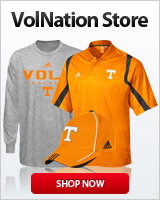This is the biggest concern about going to Adidas is the color consistency. We’re not talking about red or blue or black, which are effectively the same no matter what, we’re talking about Tennessee orange which is a very specific shade. Nike has been able to do a very good job at getting it right because they use so few suppliers across their products, particularly when it comes to uniforms. Adidas uses dozens. A different manufacturer supplies their T-shirts, another jackets, another performance apparel, so on and so forth. In uniforms, they use seven or eight across all sports, where Nike has two.
For uniforms that are designed a couple of years out, Adidas uses a manufacturer that does what Nike’s contractor does, fully dye large runs of the performance fabric and then use those to create the larger orders. Pretty standard for football and basketball, sometimes less standard for other sports.
Adidas uses manufacturers that sublimate colors on blank white uniforms. Most people couldn’t tell the difference, and actually Nike does this as well for Nike team uniforms that high schools order. The telltale sign is that the outside of the uniform is the correct color or something close, but the inside of the uniform is actually white. Both of the old alternate baseball jerseys that are pictured above use this technique. The issue that you have there is it can cause some colors to look faded, or if they don’t get the sublimation exactly correct, it ends up looking way off. Baseball had that happen a few times when they were with Adidas the first time, including the last orange baseball jersey that had an incorrectly narrow power T, and a completely wrong color orange. But they didn’t have enough of the previous uniforms to use, so we ended up wearing the wrong color orange one game a week for the whole season.
Regardless, if you use different manufacturers, custom colors can end up looking off. Think of it like this, my law firm does the town of presentations and when we do something at the last minute, we end up praying off the presentation from all five of our printers. Four of the five are the same brand, maintained by the same company, use the same inks, etc. But put side-by-side, those five presentations from five different printers have five completely different color combinations because of the slight differences in how they read the files and then print them. That’s the biggest concern, and I don’t think it’s one that’s easily fixed. But, $8 million a year.





